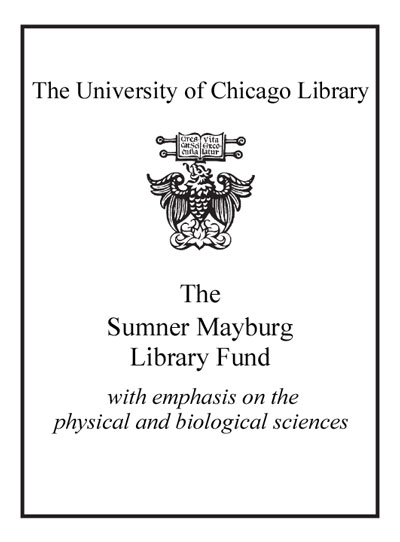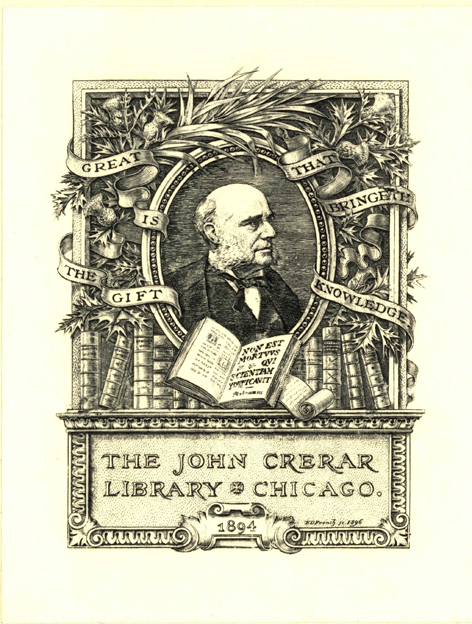Inverse modeling : an introduction to the theory and methods of inverse problems and data assimilation /
Saved in:
| Author / Creator: | Nakamura, Gen (Professor of mathematics), author. |
|---|---|
| Imprint: | Bristol : IOP Publishing, [2015] |
| Description: | 1 volume (various pagings) : illustrations (some color) ; 27 cm |
| Language: | English |
| Series: | IOP expanding physics IOP expanding physics. |
| Subject: | |
| Format: | Print Book |
| URL for this record: | http://pi.lib.uchicago.edu/1001/cat/bib/11028162 |
Table of Contents:
- Preface
- Acknowledgements
- Author biographies
- 1. Introduction
- 1.1. A tour through theory and applications
- 1.2. Types of inverse problems
- 1.2.1. The general inverse problem
- 1.2.2. Source problems
- 1.2.3. Scattering from obstacles
- 1.2.4. Dynamical systems inversion
- 1.2.5. Spectral inverse problems
- Bibliography
- 2. Functional analytic tools
- 2.1. Normed spaces, elementary topology and compactness
- 2.1.1. Norms, convergence and the equivalence of norms
- 2.1.2. Open and closed sets, Cauchy sequences and completeness
- 2.1.3. Compact and relatively compact sets
- 2.2. Hilbert spaces, orthogonal systems and Fourier expansion
- 2.2.1. Scalar products and orthonormal systems
- 2.2.2. Best approximations and Fourier expansion
- 2.3. Bounded operators, Neumann series and compactness
- 2.3.1. Bounded and linear operators
- 2.3.2. The solution of equations of the second kind and the Neumann series
- 2.3.3. Compact operators and integral operators
- 2.3.4. The solution of equations of the second kind and Riesz theory
- 2.4. Adjoint operators, eigenvalues and singular values
- 2.4.1. Riesz representation theorem and adjoint operators
- 2.4.2. Weak, compactness of Hilbert spaces
- 2.4.3. Eigenvalues, spectrum and the spectral radius of an operator
- 2.4.4. Spectral theorem for compact self-adjoint operators
- 2.4.5. Singular value decomposition
- 2.5. Lax-Milgram and weak solutions to boundary value problems
- 2.6. The Fréchet derivative and calculus in normed spaces
- Bibliography
- 3. Approaches to regularization
- 3.1. Classical regularization methods
- 3.1.1. Ill-posed problems
- 3.1.2. Regularization schemes
- 3.1.3. Spectral damping
- 3.1.4. Tikhonov regularization and spectral cut-off
- 3.1.5. The minimum norm solution and its properties
- 3.1.6. Methods for choosing the regularization parameter
- 3.2. The Moore-Penrose pseudo-inverse and Tikhonov regularization
- 3.3. Iterative approaches to inverse problems
- 3.3.1. Newton and quasi-Newton methods
- 3.3.2. The gradient or Landweber method
- 3.3.3. Stopping rules and convergence order
- Bibliography
- 4. A stochastic view of inverse problems
- 4.1. Stochastic estimators based on ensembles and particles
- 4.2. Bayesian methods
- 4.3. Markov chain Monte Carlo methods
- 4.4. Metropolis-Hastings and Gibbs sampler
- 4.5. Basic stochastic concepts
- Bibliography
- 5. Dynamical systems inversion and data assimilation
- 5.1. Set-up for data assimilation
- 5.2. Three-dimensional variational data assimilation (3D-VAR)
- 5.3. Four-dimensional variational data assimilation (4D-VAR)
- 5.3.1. Classical 4D-VAR
- 5.3.2. Ensemble-Based 4D-VAR
- 5.4. The Kalman filter and Kalman smoother
- 5.5. Ensemble Kalman filters (EnKFs)
- 5.6. Particle filters and nonlinear Bayesian data assimilation
- Bibliography
- 6. Programming of numerical algorithms and useful tools
- 6.1. MATLAB or OCTAVE programming: the butterfly
- 6.2. Data assimilation made simple
- 6.3. Ensemble data assimilation in a nutshell
- 6.4. An integral equation of the first kind, regularization and atmospheric radiance retrievals
- 6.5. Integro-differential equations and neural fields
- 6.6. Image processing operators
- Bibliography
- 7. Neural field inversion and kernel reconstruction
- 7.1. Simulating neural fields
- 7.2. Integral kernel reconstruction
- 7.3. A collocation method for kernel reconstruction
- 7.4. Traveling neural pulses and homogeneous kernels
- 7.5. Bi-orthogonal basis functions and integral operator inversion
- 7.6. Dimensional reduction and localization
- Bibliography
- 8. Simulation of waves and fields
- 8.1. Potentials and potential operators
- 8.2. Simulation of wave scattering
- 8.3. The far field and the far field operator
- 8.4. Reciprocity relations
- 8.5. The Lax-Phillips method to calculate scattered waves
- Bibliography
- 9. Nonlinear operators
- 9.1. Domain derivatives for boundary integral operators
- 9.2. Domain derivatives for boundary value problems
- 9.3. Alternative approaches to domain derivatives
- 9.3.1. The variational approach
- 9.3.2. Implicit function theorem approach
- 9.4. Gradient and Newton methods for inverse scattering
- 9.5. Differentiating dynamical systems: tangent linear models
- Bibliography
- 10. Analysis: uniqueness, stability and convergence questions
- 10.1. Uniqueness of inverse problems
- 10.2. Uniqueness and stability for inverse obstacle scattering
- 10.3. Discrete versus continuous problems
- 10.4. Relation between inverse scattering and inverse boundary value problems
- 10.5. Stability of cycled data assimilation
- 10.6. Review of convergence concepts for inverse problems
- 10.6.1. Convergence concepts in stochastics and in data assimilation
- 10.6.2. Convergence concepts for reconstruction methods in inverse scattering
- Bibliography
- 11. Source reconstruction and magnetic tomography
- 11.1. Current simulation
- 11.1.1. Currents based on the conductivity problem
- 11.1.2. Simulation via the finite integration technique
- 11.2. The Biot-Savart operator and magnetic tomography
- 11.2.1. Uniqueness and non-uniqueness results
- 11.2.2. Reducing the ill-posedness of the reconstruction by using appropriate subspaces
- 11.3. Parameter estimation in dynamic magnetic tomography
- 11.4. Classification methods for inverse problems
- Bibliography
- 12. Field reconstruction techniques
- 12.1. Series expansion methods
- 12.1.1. Fourier-Hankel series for field representation
- 12.1.2. Field reconstruction via exponential functions with an imaginary argument
- 12.2. Fourier plane-wave methods
- 12.3. The potential or Kirsch-Kress method
- 12.4. The point source method
- 12.5. Duality and equivalence for the potential method and the point source method
- Bibliography
- 13. Sampling methods
- 13.1. Orthogonality or direct sampling
- 13.2. The linear sampling method of Colt on and Kirsch
- 13.3. Kirsch's factorization method
- Bibliography
- 14. Probe methods
- 14.1. The SSM
- 14.1.1. Basic ideas and principles
- 14.1.2. The needle scheme for probe methods
- 14.1.3. Domain sampling for probe methods
- 14.1.4. The contraction scheme for probe methods
- 14.1.5. Convergence analysis for the SSM
- 14.2. The probing method for near field data by Ikehata
- 14.2.1. Basic idea and principles
- 14.2.2. Convergence and equivalence of the probe and SSM
- 14.3. The multi-wave no-response and range test of Schulz and Potthast
- 14.4. Equivalence results
- 14.4.1. Equivalence of SSM and the no-response test
- 14.4.2. Equivalence of the no-response test and the range test
- 14.5. The multi-wave enclosure method of Ikehata
- Bibliography
- 15. Analytic continuation tests
- 15.1. The range test
- 15.2. The no-response test of Luke-Potthast
- 15.3. Duality and equivalence for the range test and no-response test
- 15.4. Ikehata's enclosure method
- 15.4.1. Oscillating-decaying solutions
- 15.4.2. Identification of the singular points
- Bibliography
- 16. Dynamical sampling and probe methods
- 16.1. Linear sampling method for identifying cavities in a heat conductor
- 16.1.1. Tools and theoretical foundation
- 16.1.2. Property of potential
- 16.1.3. The jump relations of K*
- 16.2. Nakamura's dynamical probe method
- 16.2.1. Inverse boundary value problem for heat conductors with inclusions
- 16.2.2. Tools and theoretical foundation
- 16.2.3. Proof of theorem 16.2.6
- 16.2.4. Existence of Runge's approximation functions
- 16.3. The time-domain probe method
- 16.4. The BC method of Belishev for the wave equation
- Bibliography
- 17. Targeted observations and meta-inverse problems
- 17.1. A framework for meta-inverse problems
- 17.2. Framework adaption or zoom
- 17.3. Inverse source problems
- Bibliography
- Appendix A.


